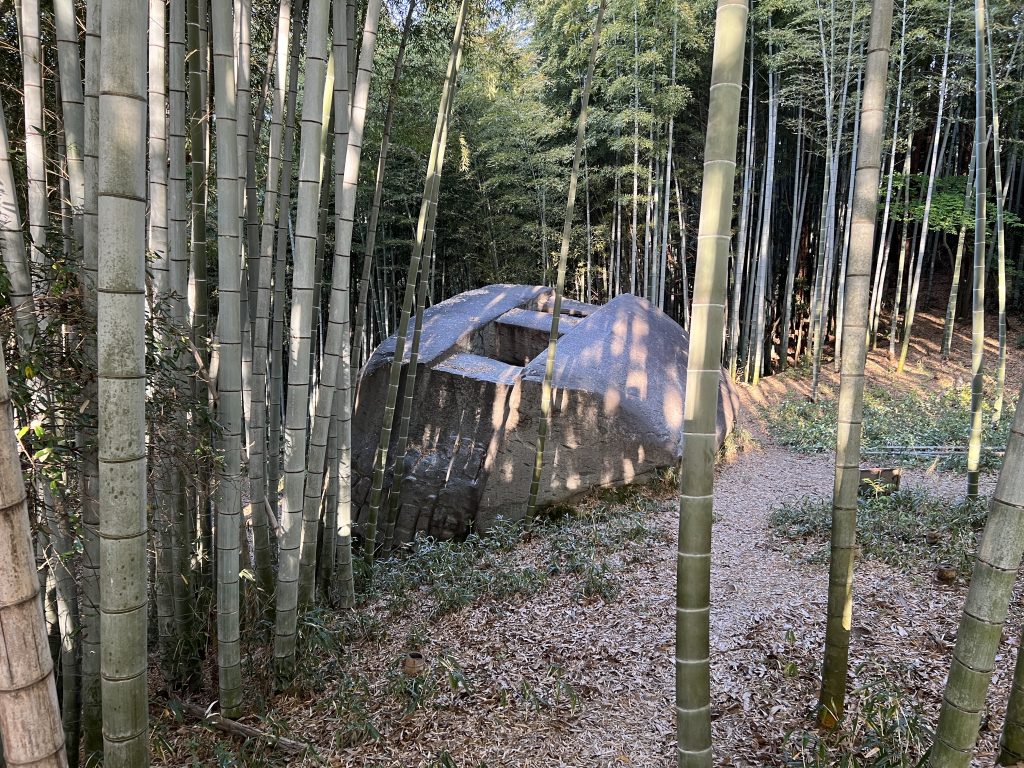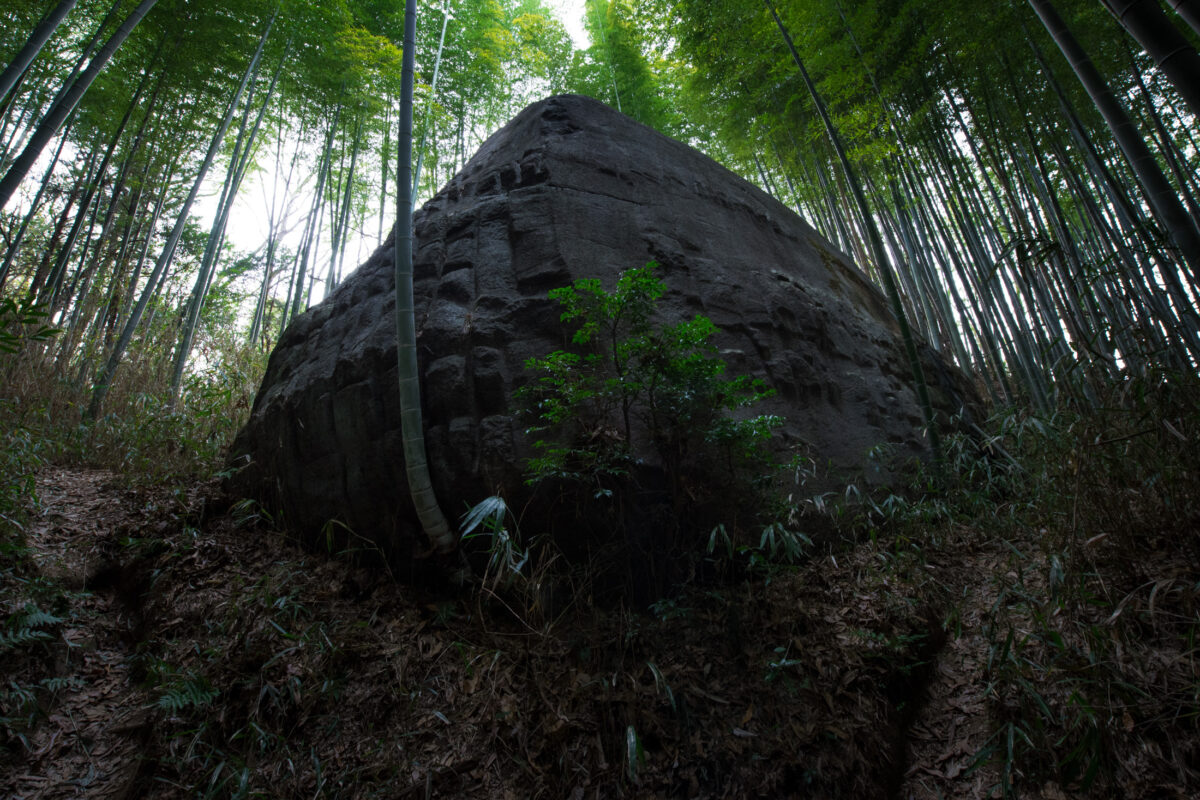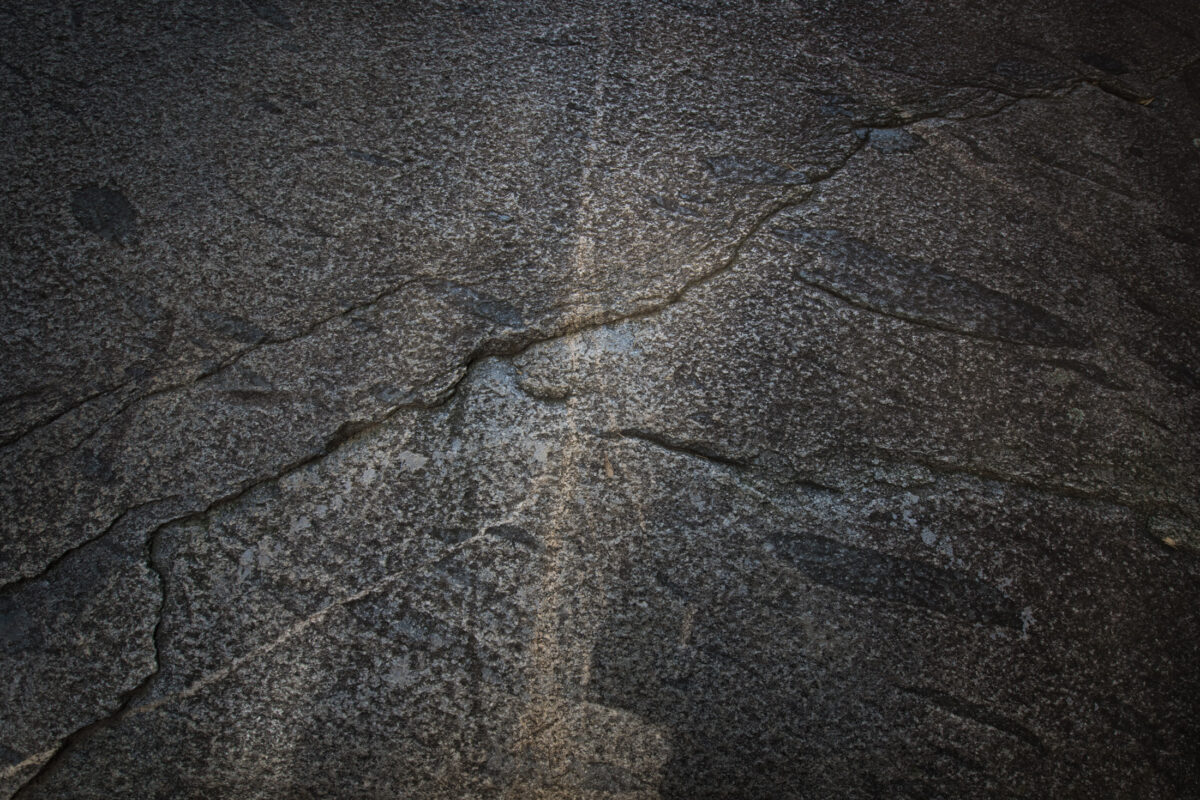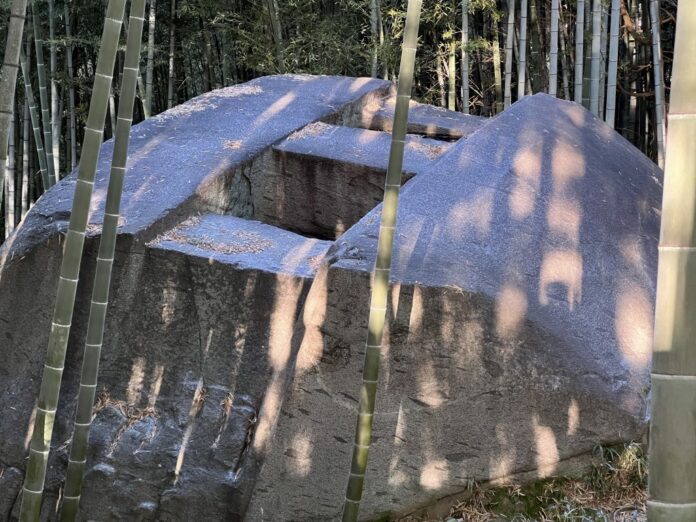The Masuda Iwafune is a large, mysterious stone structure located in Asuka, Japan. This megalithic monument, also known as the “Masuda Rock Ship,” is carved from a single piece of granite and is notable for its unusual shape, which resembles a boat or ship.
The stone measures approximately 11 meters in length, 8 meters in width, and 4.7 meters in height, weighing an estimated 800 tons. Despite extensive study, the exact date of its construction, purpose, and the methods used to carve the stone are still unknown.

The village of Asuka, located in the Takaichi district of Nara prefecture, is renowned for its mysterious stones.
The ancient origins of Asuka trace back to the Tumulus period, also known as Kofun Jidai (AD 250–552). This era of Japanese history is distinguished by a unique type of earth mound shaped like a key and surrounded by moats. However, what draws curious visitors and explorers to Asuka are the strangely carved granite stones found in the area. The most famous of these is the Masuda-no-iwafune, which translates to “Rock Ship of Masuda” (益田岩船 in Japanese). This enormous stone block weighs 800 tonnes, measures 11 meters in length, 8 meters in width, and stands 4.7 meters high, perched atop a hill. The top of the stone has been flattened, with two square-meter holes chiseled into its side. Its nickname, “rock ship,” likely derives from its resemblance to a canoe or its proximity to Lake Masuda. However, the lake has since been drained as part of regional development.

The side of the stone facing the top of the slope has been smoothed at a 45-degree angle to the ground. The other three sides feature trellis-shaped chisel marks close to the ground, which are probably related to the methods used by the builders to smooth the rock’s surface. Granite, known for its hardness and difficulty to carve, even with modern tools, makes this sculpture a fascinating technical marvel for specialists and scientists.
Different Theories
This mysterious monolith is believed to date back to the Kofun period, given the historical context of the region. Various theories have been proposed to explain its construction. One hypothesis is that, due to the numerous Buddhist temples in the region, the sculpture might have been made for religious or ceremonial purposes. However, its form and style differ significantly from any other Buddhist constructions.

Another theory posits that the stone commemorated the nearby Lake Masuda, which has since vanished. Yet, there is little evidence to support this idea.
The most popular theory suggests that the stone was used as an astronomical observation point. Its alignment with the slope hints that the monolith might be connected to the Japanese lunar calendar, which was crucial for early agriculture, and to the first astronomical observations. However, some specialists contest this theory.

Other historians propose that the rock might mark a burial site for royalty, with only the entrance completed. However, this theory still does not explain the stone’s unusual features.
To this day, the enigma of the stone’s purpose and meaning remains unsolved, with a lack of solid evidence to explain the significance of this mysterious stone ship.




